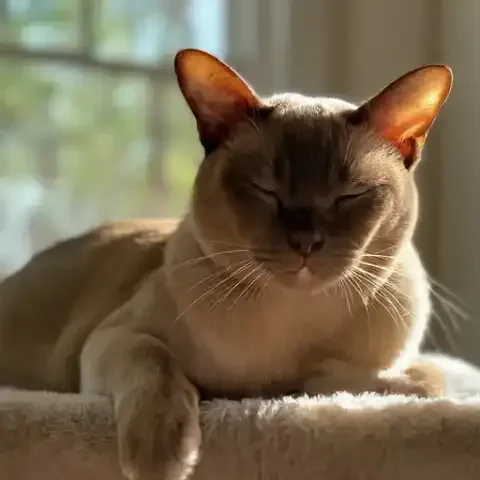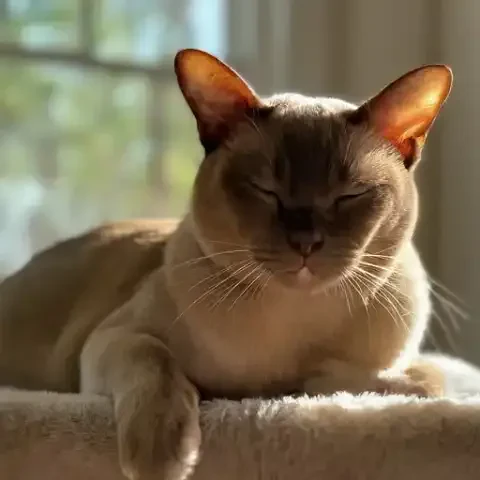Setting the Stage: The Mystique of Cats
Cats have long held a captivating allure, their enigmatic nature woven into the fabric of human history and culture. From ancient civilizations to modern times, these sleek and independent creatures have inspired fascination, reverence, and even fear. Their graceful movements, piercing gaze, and mysterious demeanor evoke a sense of intrigue that transcends mere curiosity. Whether prowling the alleys of a bustling city or lounging in the sun-dappled tranquility of a suburban garden, cats command attention with an effortless elegance that seems to defy explanation.
Significance of Understanding Cats: Their Cultural, Biological, and Behavioral Impact
Beyond their aesthetic appeal, cats play a significant role in shaping the world around us. From their role as hunters and companions to their influence on art, literature, and mythology, cats have left an indelible mark on human civilization. Moreover, the study of cats offers valuable insights into broader scientific domains, including evolutionary biology, animal behavior, and cognitive psychology. By delving into the mysteries of feline existence, we not only enrich our understanding of the natural world but also deepen our appreciation for the complex interplay between humans and animals.
Overview of Article Structure
In this comprehensive exploration, we embark on a journey to decode the multifaceted world of cats, from their evolutionary origins to their present-day significance. Through a series of interconnected sections, we will unravel the mysteries surrounding these captivating creatures, shedding light on their evolutionary history, cognitive abilities, social dynamics, and cultural significance. By the article's end, readers will gain a newfound appreciation for the enigmatic allure of cats and a deeper understanding of their profound impact on our lives and the world at large.
Evolutionary Journey of Felids
Tracing the Ancestry: From Prehistoric Cats to Domestic Felines
The evolutionary saga of felids traces back millions of years to the prehistoric landscapes of the Paleogene era. Fossils and genetic evidence offer glimpses into the ancestral forms of modern cats, revealing a diverse array of species adapted to a wide range of habitats, from dense forests to open savannas. Through adaptive radiation and natural selection, these early felids diversified and spread across continents, evolving specialized traits suited to their respective environments. Among them, the saber-toothed cats stand out as iconic megafauna, showcasing the evolutionary ingenuity of the felid lineage.
Adaptations and Survival Strategies: How Evolution Shaped Modern Cats
Over millennia of evolution, cats have developed a remarkable suite of adaptations that contribute to their success as apex predators. From retractable claws and keen senses to a flexible spine and muscular limbs, every aspect of the cat's anatomy reflects finely honed adaptations for hunting and survival. Moreover, their solitary and nocturnal lifestyle has endowed them with stealth, agility, and patience, enabling them to thrive in diverse ecosystems around the globe. By unraveling the evolutionary forces that shaped modern cats, we gain insights into the dynamic interplay between form and function in the natural world.
Genetic Insights: Unraveling the Mysteries of Cat Evolution
Advances in molecular genetics have revolutionized our understanding of cat evolution, providing unprecedented insights into their phylogenetic relationships and genetic diversity. Through comparative genomics and ancient DNA analysis, researchers have reconstructed the evolutionary history of felids, unraveling the complex patterns of divergence, speciation, and hybridization that have shaped the modern cat family tree. By deciphering the genetic blueprints of domestic and wildcat populations, scientists aim to unravel the mysteries of feline adaptation, behavior, and disease susceptibility, offering new avenues for conservation and genetic research.
The Domestication Puzzle
Origins of Domestic Cats: From Wildcats to Couch Companions
The process of cat domestication remains a captivating puzzle, with archaeological and genetic evidence offering tantalizing clues to its enigmatic origins. While the exact timeline and circumstances of feline domestication remain debated, researchers believe that wildcats, particularly the African wildcat (Felis silvestris lybica), played a pivotal role in the early stages of domestication. Evidence suggests that ancient human settlements provided an abundant food source and shelter, attracting wildcats into close proximity with humans. Over time, mutualistic relationships likely developed, leading to the gradual domestication of these once-wild creatures into the beloved companions we know today.
The Human-Cat Bond: Evolutionary, Psychological, and Social Perspectives
The bond between humans and cats transcends mere cohabitation, reflecting a complex interplay of evolutionary, psychological, and social factors. Evolutionary theories propose that the domestication of cats was driven by mutual benefits, with humans providing food and protection in exchange for pest control and companionship. From a psychological perspective, the companionship of cats has been shown to have numerous positive effects on human well-being, including stress reduction, emotional support, and improved mood. Furthermore, cats have a unique ability to form strong attachments with their human caregivers, displaying behaviors akin to those seen in parent-child relationships.
Genetic and Behavioral Changes in Domestication: What Sets House Cats Apart
The process of domestication has left a lasting imprint on the genetic and behavioral makeup of domestic cats, distinguishing them from their wild ancestors. Genetic studies have identified a number of genes associated with domestication, including those involved in coat color, pattern, and behavior. Furthermore, domestic cats exhibit a range of behavioral traits not typically observed in their wild counterparts, such as increased sociability, reduced fearfulness, and enhanced tolerance of human interaction. These genetic and behavioral changes underscore the profound impact of domestication on the feline genome and psyche, highlighting the ongoing evolutionary journey of our beloved house cats.
The Enigmatic Feline Mind
Cognitive Abilities: Understanding How Cats Think and Learn
Exploring the intricacies of the feline mind reveals a fascinating array of cognitive abilities shaped by evolution and domestication. While cats may not exhibit the same level of complex problem-solving as some other animals, they possess remarkable cognitive skills tailored to their predatory lifestyle. Studies have shown that cats excel in tasks requiring spatial memory, object permanence, and sensory discrimination, demonstrating an intuitive understanding of their environment. Furthermore, their ability to learn through observation and experience suggests a degree of cognitive flexibility that belies their reputation for aloofness.
Communication: Deciphering Cat Body Language and Vocalizations
Communication lies at the heart of feline social dynamics, with cats employing a diverse repertoire of body language and vocalizations to convey their intentions and emotions. From the flick of a tail to the arch of a back, each gesture carries nuanced meaning, serving as a form of silent communication among cats and between cats and humans. Likewise, vocalizations such as purring, meowing, and hissing play a crucial role in feline communication, signaling everything from contentment and affection to agitation and aggression. By deciphering the language of cats, we can forge deeper bonds with our feline companions and gain insight into their rich inner world.
The Nature of Feline Intelligence: Comparisons with Other Domesticated Animals
Assessing the intelligence of cats poses unique challenges due to their independent and aloof nature, yet studies suggest that they possess a sophisticated cognitive toolkit adapted to their ecological niche. While they may not perform tricks or obey commands like dogs, cats exhibit a keen problem-solving ability, resourcefulness, and adaptability that reflect their evolutionary heritage as solitary hunters. Comparisons with other domesticated animals reveal both similarities and differences in cognitive abilities, highlighting the diverse strategies employed by different species to navigate their respective environments. By appreciating the unique intelligence of cats, we can foster a deeper understanding of their behavior and better meet their cognitive needs in domestic settings.
The Social Lives of Cats
Solitary Hunters or Social Creatures? Exploring the Complexities of Cat Societies
Cats are often perceived as solitary hunters, but their social dynamics are far more complex than meets the eye. While some species of wildcats, such as the African lion, form prides and exhibit highly social behavior, others, like the solitary ocelot, lead more solitary lives. Domestic cats fall somewhere in between, displaying a range of social behaviors influenced by factors such as genetics, early experiences, and environmental factors. Understanding the nuances of cat sociality sheds light on their complex relationships with conspecifics and humans alike.
Interactions with Humans: Bonds, Hierarchies, and Dependency
Cats have a long and storied history of cohabitation with humans, dating back thousands of years to their role as rodent hunters in ancient agricultural societies. Over time, cats have forged intricate bonds with their human caregivers, blending elements of independence and dependency into their interactions. While cats may not form rigid dominance hierarchies like some social species, they do establish hierarchies within multi-cat households based on factors such as age, sex, and temperament. Moreover, cats often form strong attachments to their human companions, seeking out affection, companionship, and security in their presence.
Feline Relationships: From Friendship to Foe, Understanding Cat Dynamics
The dynamics of cat relationships are as diverse and nuanced as the personalities of the cats themselves. While some cats form close bonds with their feline housemates, engaging in mutual grooming, play, and social grooming, others may prefer solitary pursuits or maintain a more aloof demeanor. Conflict and aggression can also arise between cats, particularly in multi-cat households where resources such as food, water, and territory are shared. By observing and understanding the complexities of cat relationships, we can foster harmonious interactions and enrich the lives of our feline companions.
Cats in Culture and Mythology
Historical Depictions: Cats in Ancient Civilizations and Folklore
Cats have left an indelible mark on human culture since ancient times, with depictions of these enigmatic creatures found in art, literature, and mythology around the world. In ancient Egypt, cats were revered as sacred beings, associated with the goddess Bastet and believed to possess protective powers. Similarly, in Norse mythology, the goddess Freyja was said to ride in a chariot drawn by cats, symbolizing their connection to fertility, love, and magic. Across cultures and civilizations, cats have been depicted as symbols of mystery, independence, and wisdom, embodying both divine and earthly qualities.
Symbolism and Superstitions: The Role of Cats in Different Cultures
Cats have been both venerated and vilified throughout history, their symbolism and superstitions varying widely across cultures and belief systems. In some cultures, cats are viewed as bringers of good luck and prosperity, with beliefs such as the Japanese Maneki-neko, or "beckoning cat," which is said to attract wealth and fortune. Conversely, cats have also been associated with superstitions and omens, such as the belief that a black cat crossing one's path brings bad luck. These diverse cultural perceptions reflect the complex interplay between human psychology, folklore, and societal values.
Cats in Modern Pop Culture: From Internet Sensations to Literary Icons
In the modern era, cats continue to captivate the public imagination through their ubiquitous presence in popular culture. From viral internet memes to iconic literary characters, cats have cemented their status as cultural icons with enduring appeal. Platforms like social media have provided a global stage for cats to showcase their antics and personalities, with feline celebrities amassing millions of followers and shaping online trends. Moreover, cats have inspired countless works of literature, film, and art, from the whimsical tales of Beatrix Potter to the surreal world of Lewis Carroll's Cheshire Cat. In a world captivated by the allure of cats, their enigmatic charm continues to enchant and inspire across generations.
The Physiology of Felinity
Anatomy of a Hunter: How Cat Bodies Are Built for Agility and Predation
The anatomy of cats is a testament to their prowess as skilled hunters and agile predators. From their sleek, muscular bodies to their retractable claws and sharp teeth, every aspect of their anatomy is finely tuned for efficiency in capturing prey. Their flexible spine and powerful hind legs enable them to pounce with precision and navigate through diverse terrain with grace. Furthermore, their keen senses of sight, smell, and hearing complement their physical attributes, allowing them to detect prey from afar and stalk with stealthy precision.
Senses and Sensibilities: Exploring Cat Vision, Hearing, Smell, and Taste
Cats possess a suite of sensory abilities that far surpass those of humans, allowing them to navigate their environment with remarkable acuity. While their vision is adapted primarily for low-light conditions, cats excel at detecting motion and tracking fast-moving objects. Their acute sense of hearing enables them to detect the faintest sounds, including the ultrasonic frequencies emitted by small rodents. Additionally, cats possess a highly developed sense of smell, which they use to explore their surroundings, communicate with conspecifics, and detect potential threats or prey. While their sense of taste is less refined than that of humans, cats still display preferences for certain flavors and textures, which can influence their dietary choices and feeding behaviors.
Health and Well-being: Common Cat Ailments and Care Considerations
Like all animals, cats are susceptible to a range of health issues and ailments that can impact their well-being. Common health problems in cats include dental disease, obesity, urinary tract infections, and parasitic infestations. Regular veterinary care, including vaccinations, parasite prevention, and dental cleanings, is essential for maintaining their health and longevity. Additionally, providing a balanced diet, regular exercise, and mental stimulation are crucial components of cat care that contribute to their overall well-being. By understanding the unique physiological needs of cats and providing appropriate care and attention, we can ensure that our feline companions lead happy, healthy lives.
The Cat's Impact on Ecosystems
Domestic Cats vs. Wildlife: The Controversy Surrounding Outdoor Cats
The presence of domestic cats in outdoor environments has sparked contentious debates regarding their impact on local wildlife populations. While cats provide valuable pest control services by keeping rodent populations in check, they also pose a significant threat to native birds, small mammals, and reptiles. Studies have shown that outdoor cats are responsible for billions of bird and mammal deaths each year, contributing to declines in vulnerable species and disrupting fragile ecosystems. As such, efforts to mitigate the impact of outdoor cats, such as responsible pet ownership, managed feral cat colonies, and habitat restoration, are essential for promoting biodiversity and conserving native wildlife.
Feral Cat Colonies: Environmental and Ecological Implications
Feral cat colonies, comprised of unowned and unmanaged cats, present unique challenges for wildlife conservation and ecosystem management. These colonies often proliferate in urban and rural areas, where they compete with native predators for food and territory. Additionally, feral cats can serve as reservoirs for infectious diseases that pose risks to both wildlife and human populations. Managing feral cat populations through trap-neuter-return programs, targeted removal efforts, and community education initiatives can help mitigate their impact on ecosystems while addressing welfare concerns for the cats themselves.
Conservation Efforts and Management Strategies: Balancing Cat Welfare and Wildlife Preservation
Balancing the welfare of cats with the conservation of wildlife requires a multifaceted approach that addresses the complex interplay between human activities, cat behavior, and ecosystem dynamics. Conservation organizations, animal welfare groups, and government agencies are working together to develop evidence-based management strategies that minimize the impact of cats on wildlife while promoting responsible pet ownership and humane cat management practices. These efforts include public outreach campaigns, habitat restoration initiatives, and collaborations between stakeholders to find sustainable solutions that safeguard both cats and ecosystems for future generations.
The Future of Feline Studies
Advancements in Cat Research: Technologies and Methodologies
The field of feline studies is continually evolving, driven by advancements in technology and research methodologies. Emerging tools such as next-generation sequencing, functional imaging, and behavioral tracking devices offer unprecedented opportunities to delve deeper into the mysteries of the feline mind and body. These cutting-edge technologies enable researchers to explore questions related to genetics, neuroscience, behavior, and health with greater precision and accuracy, paving the way for groundbreaking discoveries in cat biology and welfare.
Emerging Fields: Genetics, Neuroscience, and Behavioral Studies
Exciting developments are underway in fields such as feline genetics, neuroscience, and behavioral studies, shedding new light on the genetic basis of feline traits, the neural mechanisms underlying behavior, and the cognitive abilities of cats. Genome-wide association studies (GWAS) are uncovering genetic variants associated with traits such as coat color, pattern, and disease susceptibility, providing insights into the genetic diversity and evolutionary history of domestic cats. Similarly, advances in neuroscience are revealing the neural circuits and brain regions involved in feline cognition, emotion, and sensory perception, offering valuable clues to the inner workings of the feline brain.
Implications for Cat Welfare and Human-Animal Relationships
The burgeoning field of feline studies has profound implications for cat welfare and human-animal relationships, informing best practices for cat care, behavior modification, and veterinary medicine. By gaining a deeper understanding of feline behavior, preferences, and needs, we can better meet the physical, mental, and emotional needs of cats in domestic environments. Moreover, insights from feline research can inform policies and guidelines aimed at promoting responsible pet ownership, reducing feline overpopulation, and mitigating the impact of cats on ecosystems. Ultimately, by bridging the gap between science and practice, feline studies have the potential to enhance the well-being of cats and strengthen the bond between humans and their feline companions.
Conclusion
Summarizing Key Insights: What We've Learned about Cats
Throughout this exploration of the enigmatic world of cats, we've uncovered a wealth of insights into their evolutionary history, cognitive abilities, social dynamics, and cultural significance. From their ancient origins as solitary hunters to their modern-day roles as beloved companions, cats have captivated human imagination and enriched our lives in countless ways. Through the lens of science and scholarship, we've gained a deeper appreciation for the complexities of feline biology, behavior, and welfare, illuminating the intricate tapestry of the feline phenomenon.
The Enduring Appeal of Feline Mysteries
Despite centuries of study and observation, much about cats remains shrouded in mystery, their elusive nature serving as a source of enduring fascination and intrigue. From the enigmatic depths of their golden eyes to the inscrutable mysteries of their nocturnal prowlings, cats continue to beguile and bewitch us with their timeless allure. As we continue to unravel the mysteries of the feline world, we embark on a journey of discovery that promises to deepen our understanding of these remarkable creatures and further enrich our lives in ways both profound and unexpected.
Looking Ahead: Continual Exploration and Understanding of the Feline Phenomenon
As we peer into the future, the enigmatic world of cats beckons us onward, inviting us to embark on a journey of continual exploration and understanding. Through ongoing research, education, and advocacy, we can ensure that cats receive the care, respect, and appreciation they deserve as integral members of our shared world. By fostering a deeper connection with the feline realm and embracing the mysteries that lie within, we embark on a voyage of discovery that promises to enrich our lives and expand our horizons for generations to come.







